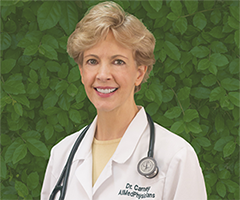-
scarney commented on this post about 6 years agoHi All,
It has become evident to me that my T1D control method is probably more different from "conventional" than I had previously thought. As mentioned in my "Confession" talk / post ( https://www.drcarney.com/blog/condition-related/my-diabetes-confession), what I learned about T1D control was mostly in an information vacuum. I admit that much of the vacuum was self-induced as I rejected the methods prescribed by my doctor as well as the information from the American Diabetes Association plus what was taught in all of the T1D management classes that I attended. The rejection was because I felt it wasn't working and all of the sources followed the same method. This isn't to say that I think I'm smarter than the experts, it's just that I had a different goal. I didn't want to "survive" diabetes; Instead, I didn't want to be diabetic - even if that requires a lot more effort.
I mention this because I am discovering that many times when people ask me questions, I'm not on the same "page" or "wavelength". I find that I am not confidently familiar with many of the conventional terms, schedules, methods and equipment. I've been using my method for so long that "conventional" seems foreign.
With that realization, I have decided to write a book on my method. It is titled; "Synchronous Push-Pull Type-1 Diabetes Control - The Non-Diabetic Diabetic Method" (SPP method for short). I am working on it in my "spare time", so I don't have a completion date projection yet. My plan is to post it here as a PDF download once it is done.
We are all here to learn from each other, but I wanted to mention this as I suspect that my method may not mix well with conventional T1D methods. Sometimes, when asked a question, I'm not sure if I'm on the same page as the person asking. I think that questions are most often asked from the conventional T1D method viewpoint (of which I have essentially no experience), but I'm answering from my SPP T1D method view point, thus, my answer may not be a perfect fit. I just wanted everyone to be aware of that in our communications.
Thanks to all,
Ken
-
 I'll look forward to your book Ken. You're kind to share your knowledge with the world.
I'll look forward to your book Ken. You're kind to share your knowledge with the world. -
 I can't wait to read the book. :-)
I can't wait to read the book. :-)
Post is under moderationStream item published successfully. Item will now be visible on your stream. -
Mission Statement

To Promote and Encourage the Prevention and Reversal of Disease Through Personal Implementation of Practical Lifestyle Measures by Providing Starch-Smart® Health Education!
Frequently Used
My Videos
Site Access

Copyright © 2025 TheraLiv Inc

